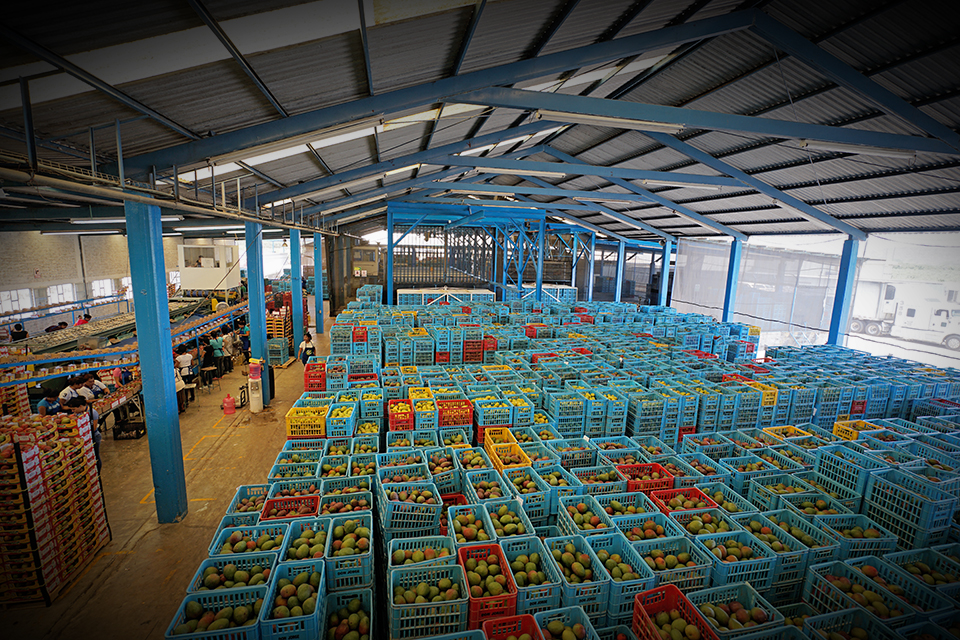
Empaque Don Jorge Opens Amidst Heightened Demand & COVID-19
El Grupo Crespo’s Home Packhouse Offers Relief to Crespo & Other Brands
*All photos are pre- remodel, new photos coming soon!
El Rosario, Sinaloa, Mexico – Empaque Don Jorge I (EDJI) opened last week for the season. EDJI is the hometown packhouse of El Grupo Crespo family’s two brands, Crespo Organic & RCF, and Latin America’s largest hydro-thermal packhouse.
Originally built by Roberto Crespo Fitch in the early 1970’s, the packhouse was recently revamped by Roberto’s children Malu, Roberto, Jorge, and Jose Angel. Today they run the family agricultural business (El Grupo Crespo). The siblings initiated the three-year modernization project in Fall 2016 and completed all upgrades last season. This season, all upgrades and modernizations are smoothly running.
The group had hoped to travel with Crespo Organic customers to the packhouse at opening time, but the pandemic had other plans. A new campaign that the Crespo Organic marketing team hoped to launch this month educating on the modern facility was also cast aside. This campaign’s aim was to map the mango packing process visually from orchard-to-table, giving customers and consumers an up-to-date peak inside the newly revamped packhouse. For now, the older marketing campaign and videography will have to suffice, new footage is always emerging from Jorge Crespo, aka the #MangoMan, who is happy to show the orchards and packhouse from his perspective.
All upgrades were designed to improve efficiencies, increase outputs, boost quality, and improve working conditions for workers, many whose families have worked at EDJI for over four generations. This season brings a new appreciation for better use of space as COVID-19 has made packing operations complex.

The packhouse’ 100,000 SF floor space was rearranged with the revamp, and now includes an additional packing line, bringing the total to 7 lines, packing over 14 different labels for growers across Mexico and for some of the largest conventional US mango importers. There is one dedicated full-time packing line for the Crespo Organic brand and a sperate section dedicated solely to packing non-treated Canadian exports. An additional hydro-thermal tank was added, bringing the total to 11 stainless steel tanks allowing over 64,000 KG of fresh mangoes to be USDA hot water treated simultaneously.
The packhouse’s season opens with new state-of-the-art cooling equipment and cold chain systems and cold storage volume greatly enhanced and enlarged, accommodating an extra 4 truckloads in pre- and post- cooling facilities.
Despite the COVID-19 complexities and distancing/safety protocols, the facility anticipates higher outputs than previous seasons. New high-tech, efficient, and worker-friendly stainless-steel machines – washers, sorters, polishers, conveyers, and packing lines across the space – were designed for this. Thus, El Grupo Crespo projects packing capacities will still be sizable during the height of the pandemic and significantly expandable as distancing measures dissipate.
EDJI aims to process at full capacity with 14 truckloads/day within weeks. The optimizations are not only improving efficiencies and making packers’ jobs easier but also helping control costs. This is especially important with the rise of the peso and uncertainties in the marketplace.
The entire mango packing process is extremely complex, it all happens in 72 hours, with over 18 hours allocated to post-pack cooling. EDJI is one of today’s most efficient and quality-driven packhouses packing for North America since these changes have occurred, it also now….OPEN for business. (All photos and videos are pre-modernizations and upgrades, the new photography and videography projects were interrupted by COVID-19 and will commence as soon as possible.)















